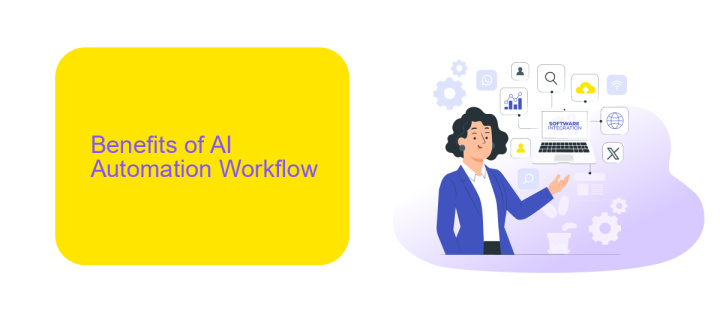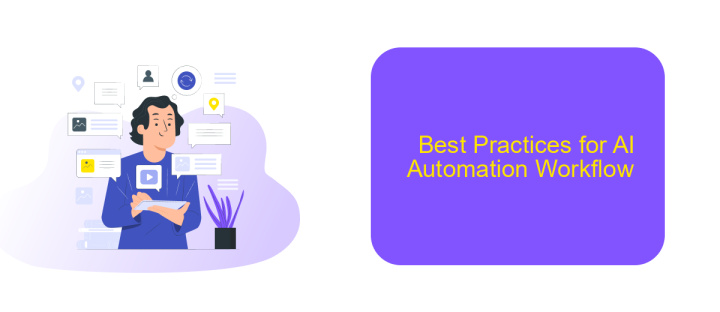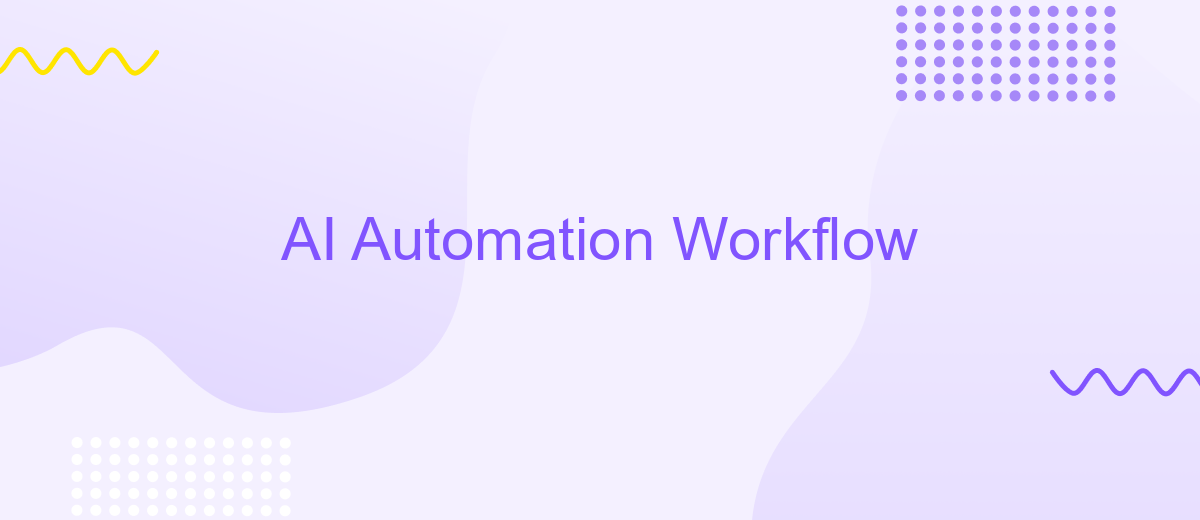AI Automation Workflow
In today's fast-paced digital era, AI automation workflows have become a crucial component for businesses seeking efficiency and innovation. By leveraging advanced algorithms and machine learning, these workflows streamline complex processes, reduce human error, and enhance productivity. This article delves into the core concepts, benefits, and practical applications of AI-driven automation, offering insights into how organizations can harness its potential for transformative growth.
Introduction
In today's fast-paced digital world, the integration of AI automation workflows has become essential for businesses seeking to enhance efficiency and productivity. By leveraging AI technologies, organizations can streamline repetitive tasks, reduce human error, and free up valuable human resources for more strategic activities.
- Automated data processing and analysis
- Seamless integration with existing systems
- Real-time monitoring and adjustments
- Enhanced decision-making capabilities
One of the key aspects of implementing AI automation workflows is the integration of various tools and services. Platforms like ApiX-Drive facilitate this process by allowing seamless connections between different applications and automating data transfers. This not only simplifies the setup but also ensures that all systems work harmoniously together, providing a cohesive and efficient workflow. As a result, businesses can achieve greater operational efficiency and focus on innovation and growth.
Benefits of AI Automation Workflow

AI automation workflows offer numerous benefits, significantly enhancing operational efficiency and productivity. By automating repetitive tasks, businesses can reduce human error and free up valuable time for employees to focus on more strategic activities. This leads to faster decision-making and improved overall performance. Additionally, AI-driven automation can handle large volumes of data with precision, ensuring that processes run smoothly and consistently.
Another key advantage is the seamless integration of various tools and systems, which can be facilitated by services like ApiX-Drive. This platform allows businesses to easily connect different applications and automate data transfer between them, streamlining workflows and reducing the need for manual intervention. By leveraging such integration services, organizations can achieve greater scalability and flexibility, adapting quickly to changing business needs and market conditions. Ultimately, AI automation workflows not only enhance efficiency but also drive innovation and growth.
Considerations for Implementing AI Automation Workflow

Implementing an AI automation workflow can significantly enhance operational efficiency, but it requires careful planning and consideration. Firstly, it is crucial to assess the specific needs and objectives of your organization. Understanding the tasks that can be automated and the expected outcomes will help in selecting the right AI tools and technologies.
- Identify the key processes and tasks that can benefit from automation.
- Select appropriate AI tools and platforms that align with your business requirements.
- Ensure seamless integration with existing systems and workflows.
- Consider data privacy and security implications.
- Plan for continuous monitoring and optimization of the AI workflows.
For seamless integration, services like ApiX-Drive can be extremely beneficial. ApiX-Drive allows for the easy connection of various applications and systems, ensuring smooth data flow and communication between them. This can greatly reduce the complexity and time required to set up your AI automation workflow. Finally, always keep an eye on the evolving AI landscape to incorporate new advancements and maintain a competitive edge.
Best Practices for AI Automation Workflow

Implementing an AI automation workflow requires careful planning and execution to ensure efficiency and accuracy. Begin by clearly defining the objectives and identifying the processes that can benefit most from automation. This will help in setting realistic goals and measuring success effectively.
Next, select the appropriate AI tools and platforms that align with your specific needs. Consider factors such as scalability, ease of integration, and support for various data types. It's crucial to choose technologies that can seamlessly integrate into your existing systems.
- Regularly monitor and evaluate the performance of your AI models.
- Ensure data quality and consistency to avoid errors in automation.
- Leverage integration services like ApiX-Drive to streamline data flow between different applications.
- Continuously update and refine your AI algorithms based on feedback and new data.
Finally, involve key stakeholders throughout the process to ensure alignment with organizational goals. Providing adequate training and support for your team will also enhance the effectiveness of the AI automation workflow. By following these best practices, you can maximize the benefits of AI in your operations.
Conclusion
The implementation of AI automation workflows has revolutionized the way businesses operate, enhancing efficiency and reducing human error. By automating repetitive tasks, organizations can allocate more resources to strategic initiatives, driving innovation and growth. The integration of AI tools into existing systems streamlines processes, offering real-time data analysis and decision-making capabilities that were previously unattainable.
Effective integration of various services is crucial to maximizing the benefits of AI automation. Tools like ApiX-Drive facilitate seamless connectivity between different applications, enabling smooth data flow and synchronization. This not only simplifies the setup process but also ensures that all systems work harmoniously together. As businesses continue to adopt AI automation, leveraging integration platforms will be key to unlocking their full potential and maintaining a competitive edge in the market.
FAQ
What is AI automation workflow?
How can AI automation improve business efficiency?
What types of tasks are best suited for AI automation?
How do I integrate AI automation into my existing workflow?
Is it necessary to have technical expertise to implement AI automation?
Apix-Drive is a universal tool that will quickly streamline any workflow, freeing you from routine and possible financial losses. Try ApiX-Drive in action and see how useful it is for you personally. In the meantime, when you are setting up connections between systems, think about where you are investing your free time, because now you will have much more of it.

